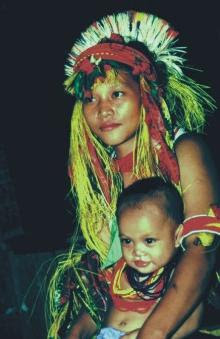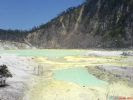Asmat Foods




 The Asmat are a coastal people occupying a low-lying swampy region. Their homeland covers approximately 9,652 square miles (25,000 square kilometers) in southwestern Irian Jaya. The swamps include sago palms, mangroves, and patches of tropical rain forest. The Asmat population is estimated at about 65,000 people, living in villages with populations of up to 2,000.
The Asmat are a coastal people occupying a low-lying swampy region. Their homeland covers approximately 9,652 square miles (25,000 square kilometers) in southwestern Irian Jaya. The swamps include sago palms, mangroves, and patches of tropical rain forest. The Asmat population is estimated at about 65,000 people, living in villages with populations of up to 2,000.
Asmat society is divided into two halves called "moieties" by anthropologists. Within a given village, a person is supposed to marry someone who belongs to the opposite moiety. After the marriage, the bride moves in with her husband's family. Extended families occupy large houses built of bamboo, sago bark, and sago frond thatching. Men sleep apart from their wives in the men's longhouse (yew). Ceremonial activities that take place inside the men's house are prohibited to women.
Wife beating was an accepted practice in the past. Unmarried women and girls are still beaten by their fathers or brothers if their behavior is considered unacceptable. A woman's property is transferred to her husband at the time of marriage, and she loses control over it.
Fish and the sago palm are the staple foods of all Asmat groups. Canned meats and fish, as well as flour, tea, and sugar, have become important food items as well. A butterfly larva often found in rotting tree carcasses is an important ritual food considered a delicacy among the Asmat
Asmat drums have an hourglass shape and a single, lizard-skin-covered head that is struck with the palm of the hand. The other hand is used to hold the drum by a carved handle. Although the Asmat regard drums as sacred objects, they do not define instrumental sounds as music. Only singing is classified as music in Asmat culture. Love songs and epic songs, which often take several days to perform, are still important forms of expression.
Traditionally, dance was an important part of Asmat ceremonial life. However, missionaries have discouraged it. The Asmat have a great deal of oral literature, but no written tradition.
The Asmat Museum of Culture and Progress is collecting artifacts from all areas of Asmat culture. It produces catalogues and other publications on Asmat culture, mythology, and history.



Comments
Post a Comment